

| Sensor name |
Alt. name |
Function
Sensor or device. Items in RED are critical in starting the engine. |
Location (typical) 89-95. |
| IAT |
ACT |
Air temp, or Intake Air
Temperature sensor. IAT |
In the
intake tube or the intake
manifold plenum, not critical , it fine tunes! |
| ECT |
WTC |
Engine Coolant
Temperature senso ECT |
Screws
to water jacket on block or water outlet of thermostat housing. |
| MAP |
--- |
Manifold Absolute Pressure. Critical after Starting. MAP |
Connected
to intake manifold plenum. Vacuum sensor, electronic. |
| TPS |
--- |
Throttle (valve)
Position Sensor TPS
with switch |
On the
end of the Throttle Body butterfly shaft. A Variable
resistor. |
| O2S |
EGO |
Exhaust oxygen sensor O2S ( HGEO = heated ) |
Located
in exhaust manifold (on old cars), new cars have 2
or more |
| VSS |
--- |
Vehicle Speed sensor. VSS |
Just
a rotation counter on the speedo cable. Cars speed is measured. |
| CMP |
CAS |
CAM angle
sensor. CMP |
Located
in the old Distributor or on Cam shaft end , on newer cars. |
| CKP |
CPS |
Crank position
sensor CKP
(96 an newer) |
Located on
front of oil pan and reluctor wheel behing crank belt cog wheel. |
| EGR |
--- |
Exhaust Gas
Recirculation devices EGR |
Located
on Intake manifold and is not a sensor (but is,on somecars ) |
| MIL |
CEL |
Maintenance Indicated Lamp ,Check Engine Light | On
dash Lamp shared with SES.
Service engine soon. |
| PCM |
ECM |
Power train control
module PCM EFI
controller (suz) |
89-95
is behind left front speaker. aka:ECU,ECA,ECC, BRAIN or Puter |
| MAF |
AFS |
MASS Air Flow, Sensor MAF |
Located
on Air tube
between Throttle body and the Air cleaner. 95 and newer vehicles and
all 16valve engines. NEVER touch the HOT WIRE! |
| ISC |
IACE |
Idle speed Controller (a output
actuator
device) ISC |
ECU
Idle control
valve. Electric modulated Idle control device. |
| IAC |
IACT |
Idle Air Control IAC usually a thermo device |
Located on base of Throttle body
"TB" both MPI and TBI |
| Misc. |
--- |
Injectors, Ignition
coil, Fuel
pump, outputs |
Starter monitor, Battery
voltage monitor. |
| MPI |
TBI
|
Multi Point Injection and
Throttle body Injection. |
16v is MPI and 8v engines
are TBI . Vastly different EFI designs. |
| EVAP |
--- |
Evapoative Emissions |
Large black charcoal
canister and vacuum control purge valves. |
| TCC |
--- |
Torque Converter Clutch
(solenoid) TCC |
varies by year, some PCM's
(newer) have no relay ,ECU has direct drive. |
| TCM |
--- |
Transmission Control
module, 4speed only |
located high in dash above right
knee behind ignition key level. |
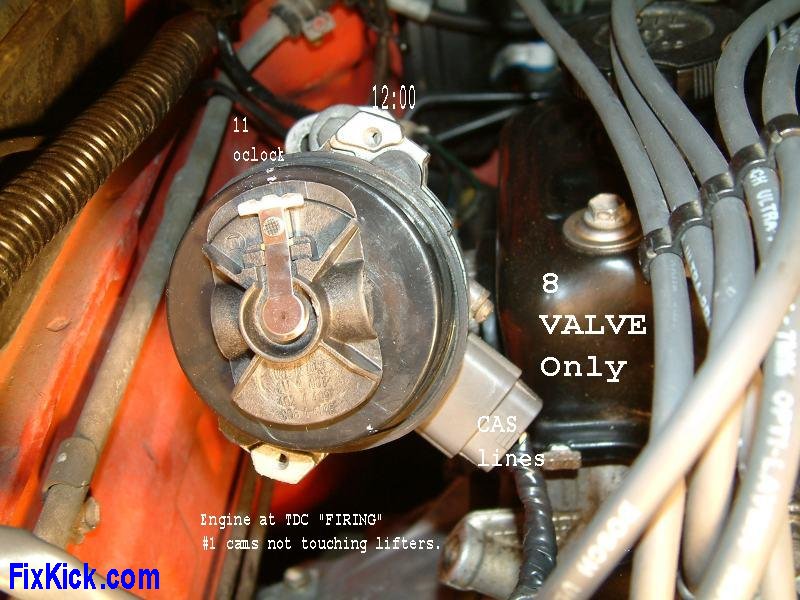 My Distributor, click to zoom.
My Distributor, click to zoom.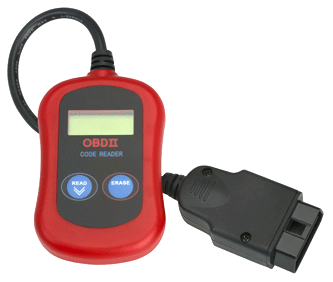 A code Reader for 96 and newer
cars. Other older cars have other methods and devices for pulling
codes.
A code Reader for 96 and newer
cars. Other older cars have other methods and devices for pulling
codes.THE DUMMY SPARK PLUG: (get one) 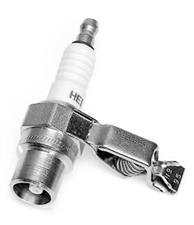 This is the
best kind (IMHO) but, there are many more good types.
This is the
best kind (IMHO) but, there are many more good types.To test for spark , you should have a dummy spark plug connected (see above photo). Never short out any spark plug top terminal to ground directly or leave it open circuited. You MAY damage the ignitor device.[ a huge transistor ] or in newer cars the ECU will be blown out. ( integrated Ignitor). < best reason to not do it! ( the ignitor, is part of a High Energy Ignition, that which generates up to 50,000 volts, to spark the plugs ) The above is Sold in all Automobile parts stores. It is dirt cheap. Some guys just weld a clip to a new spark plug. RESPECT: ( this is high voltage and can be dangerous , unlike a lawn mower engine with 5 times less power) 50,000 volts, don't touch it while cranking or running the engine. It will be very painful! Even dangerous if it passes through your heart ! |

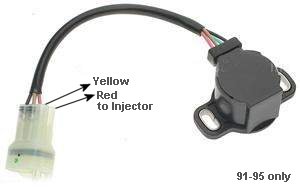 TPS
, located on the end of the throttle valve TB,
butterfly shaft ! This one is for the 8Valve engine.
TPS
, located on the end of the throttle valve TB,
butterfly shaft ! This one is for the 8Valve engine.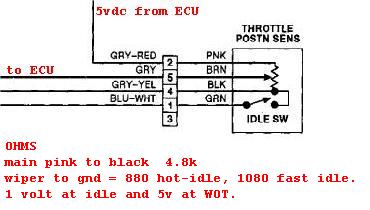 8V config.
8V config. 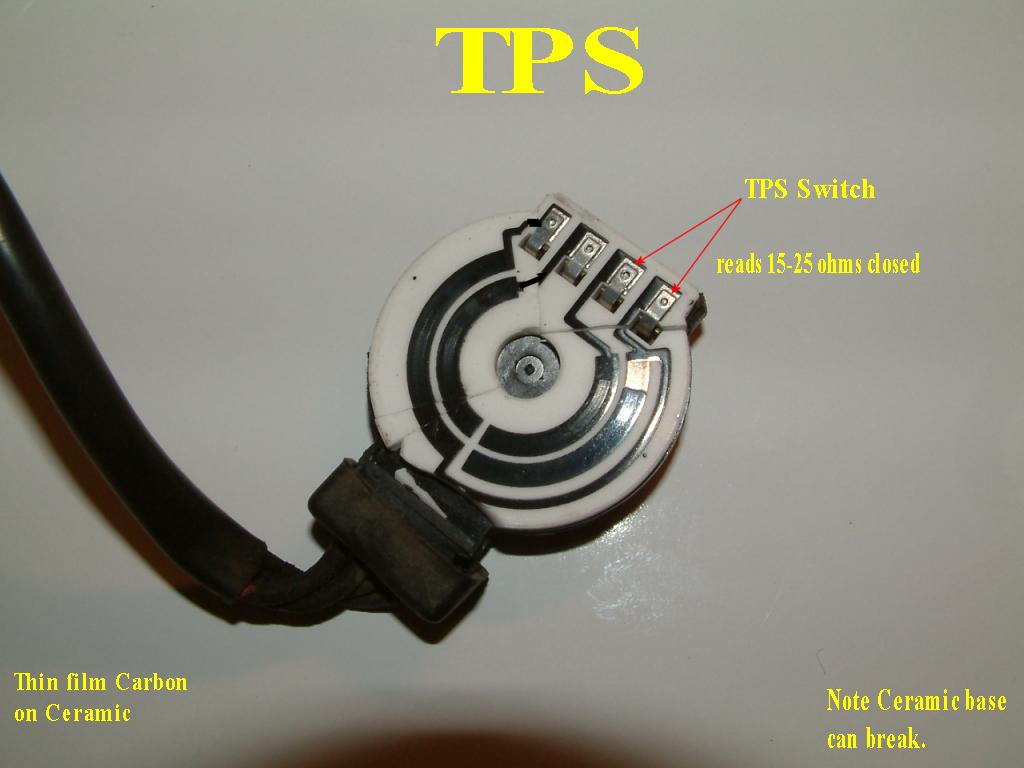 Click
to zoom , a broken TPS insides.
Click
to zoom , a broken TPS insides. MAP sensor sits on my firewall and a
vacuum
nipple connects to the intake plenum. (8 Valve engine.)
MAP sensor sits on my firewall and a
vacuum
nipple connects to the intake plenum. (8 Valve engine.)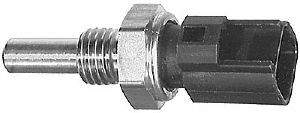 The
ECT Sensor.
The
ECT Sensor. 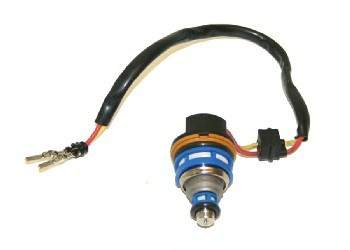 The fuel injector ,
inside the Throttle Body (TB)
The fuel injector ,
inside the Throttle Body (TB)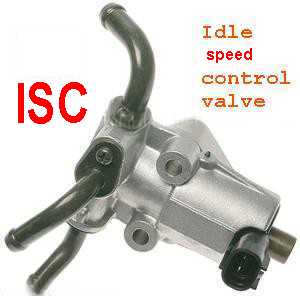 AKA: ISC in some manuals. Click here to see my testing
page on this device..
AKA: ISC in some manuals. Click here to see my testing
page on this device..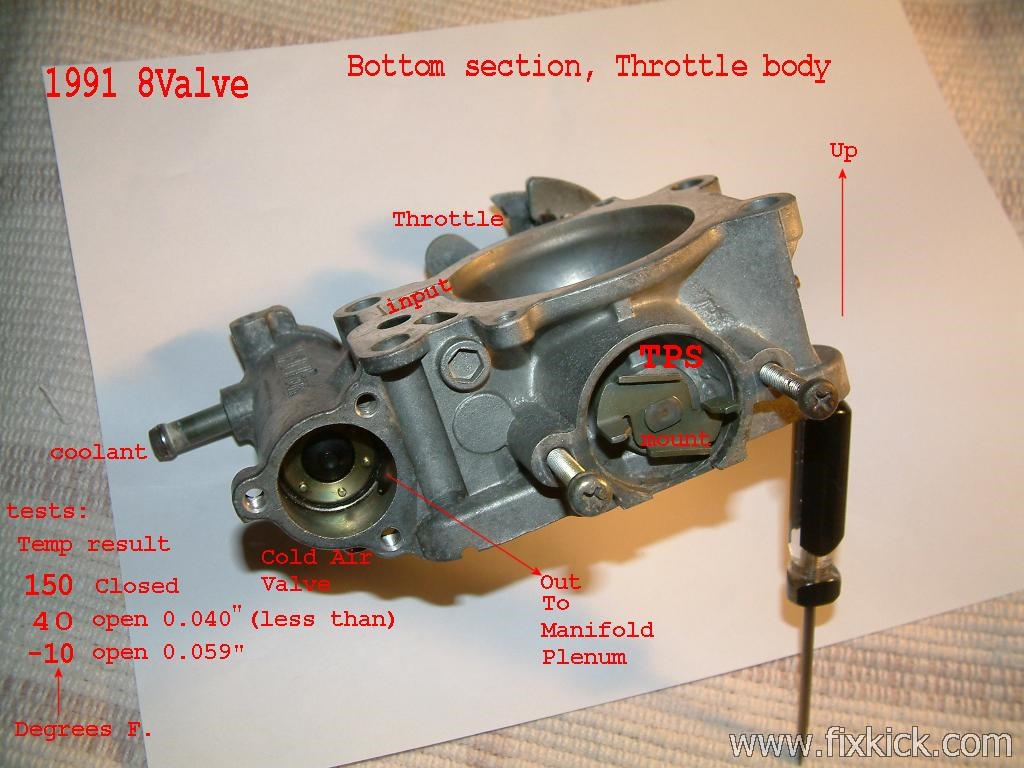
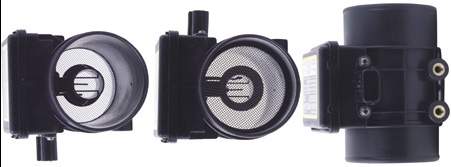 A
New
MAF
A
New
MAF < << Click here to find out, how to
trouble-shoot,
test, evaluate and buy a new OxyGen Sensor.
< << Click here to find out, how to
trouble-shoot,
test, evaluate and buy a new OxyGen Sensor.